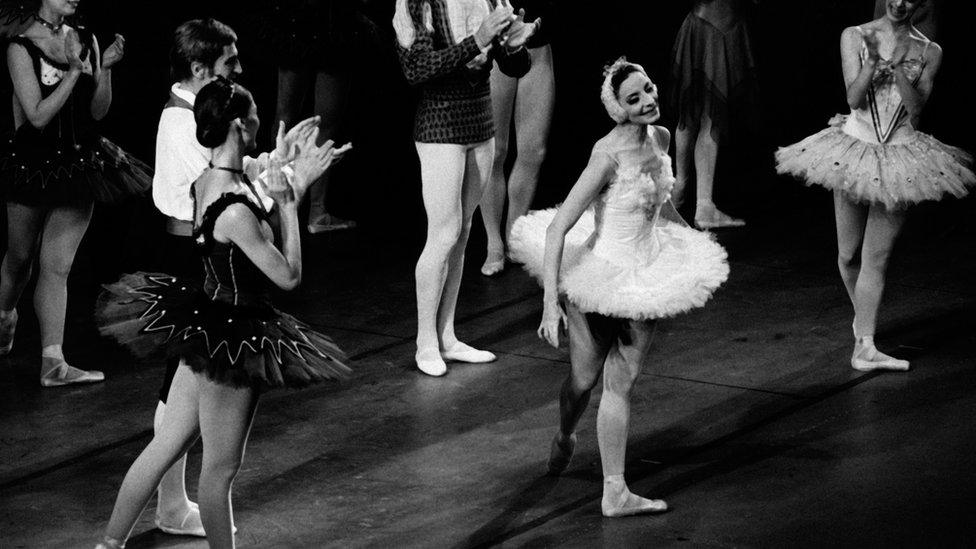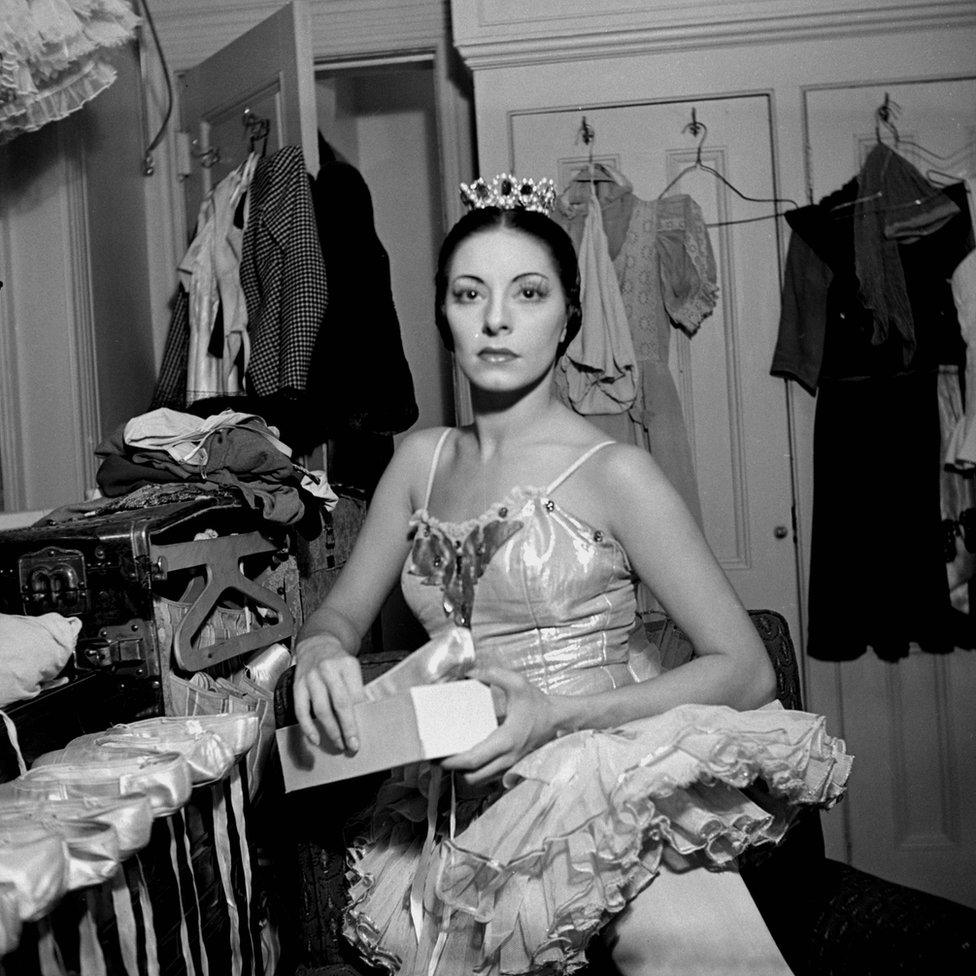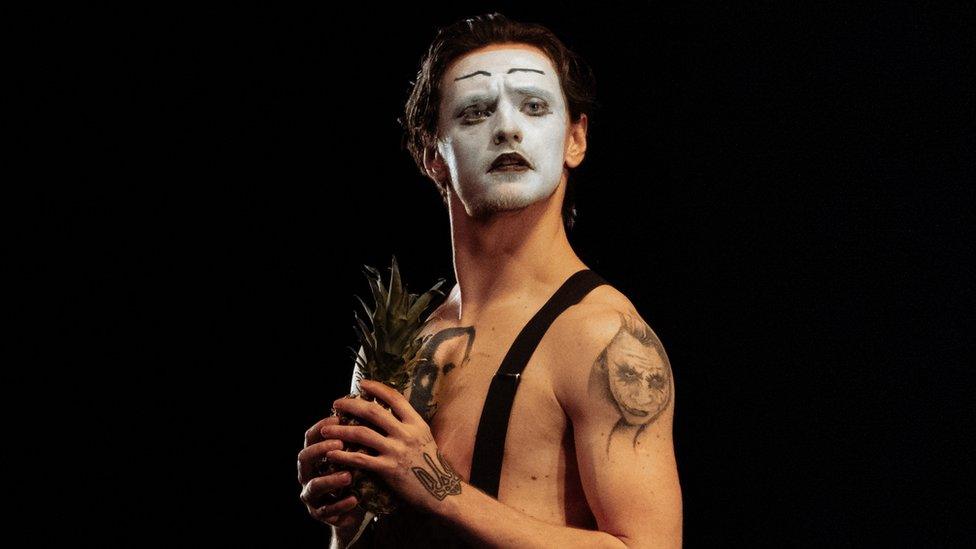Alicia Alonso: Legendary ballet dancer dies aged 98
- Published

Cuba's president said her death had left "an enormous void"
Cuban ballet dancer Alicia Alonso has died age 98, the country's state media has announced.
Alonso is considered one of the greatest 20th Century ballerinas. She began to lose her sight at 19, relying on only the stage lights to guide her.
After the 1959 revolution, she helped found the National Ballet of Cuba with then leader Fidel Castro.
"Alicia Alonso has gone and left an enormous void but unbeatable legacy," President Miguel Diaz-Canel said.
"She positioned Cuba at the altar of the best of dance worldwide. Thank you Alicia for your immortal work," he added.
Born Alicia Ernestina de la Caridad Martínez del Hoyo on 21 December 1921, she first appeared on stage in 1931. She fell in love with ballet.

During her recovery from eye operations, teachers came to teach her dance moves using her fingers
"When you look out and you see the theatre full of people you feel that you are alive, that you have been born. It's wonderful, it's unique," she told the BBC in 2015.
At the age of 16, she married fellow student Fernando Alonso and the pair moved to New York, joining Ballet Caravan.
Three years later, her eyesight began to deteriorate. She was diagnosed with a detached retina.
She told the BBC: "I suffered terribly with my sight and had to have various operations on my eyes. Detachment of the retina. It was terrible. They told me not to quickly lower my head or move it side to side. I was like that for two years.
"They told me I'd never dance again. Well I did dance again."
During her recovery, teachers came to her bedside to teach her the steps to Giselle, moving her fingers to practice the steps, external.

At 19, her eyesight began to deteriorate and she was diagnosed with a detached retina
However the issues with her sight later came back and at one point she was unable to see her fellow dancers, relying on stage lights.
She had a number of operations.
By the late 1940s, she had performed major roles, particularly Giselle, in both New York and London.
In 1948, she founded the Alicia Alonso Ballet Company in Cuba's capital. She said every time she came home to Cuba she would question why there couldn't be ballet for everyone in the country.
Her ballet company collapsed in 1956 due to a lack of finance.

Every time she came home to Cuba, Alonso always wondered why Cuba couldn't also have ballet
Alonso then formed the National Ballet of Cuba after the revolution. According to a 1981 biography of the dancer, she was asked by Fidel Castro how much money was needed to form the ballet company.
She recalled telling Castro that she needed $100,000.
His reply was: "We will give you $200,000."
The company brought ballet to everyone with performances in factories and other workplaces.
Alonso continued to direct the company until her 70s and also kept dancing during that time.
She is so respected in Cuba that she has perfume named after her and an ice cream parlour named Coppelia after one of her most famous roles.
Witness: Cuba Ballet
- Published29 September 2016

- Published30 May 2019
